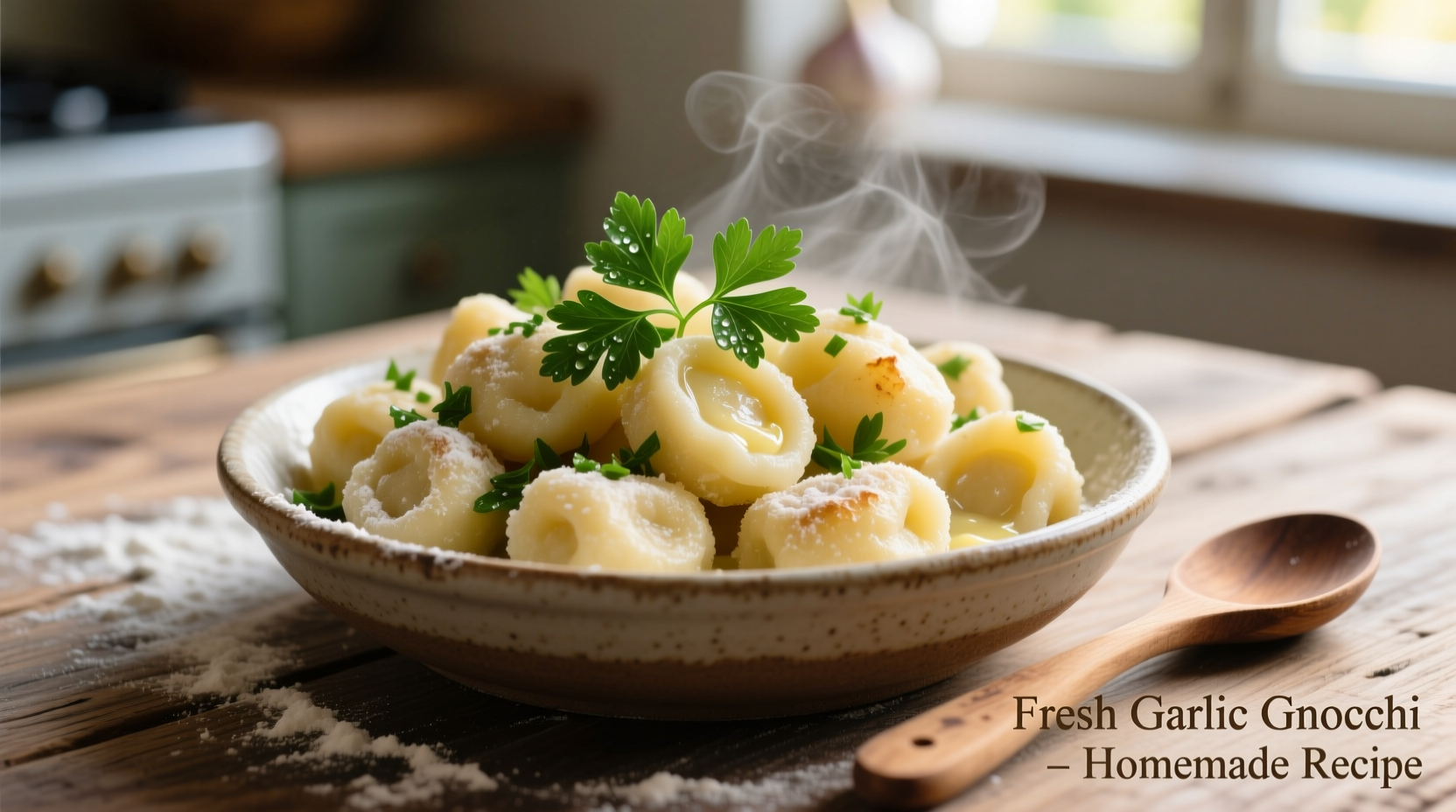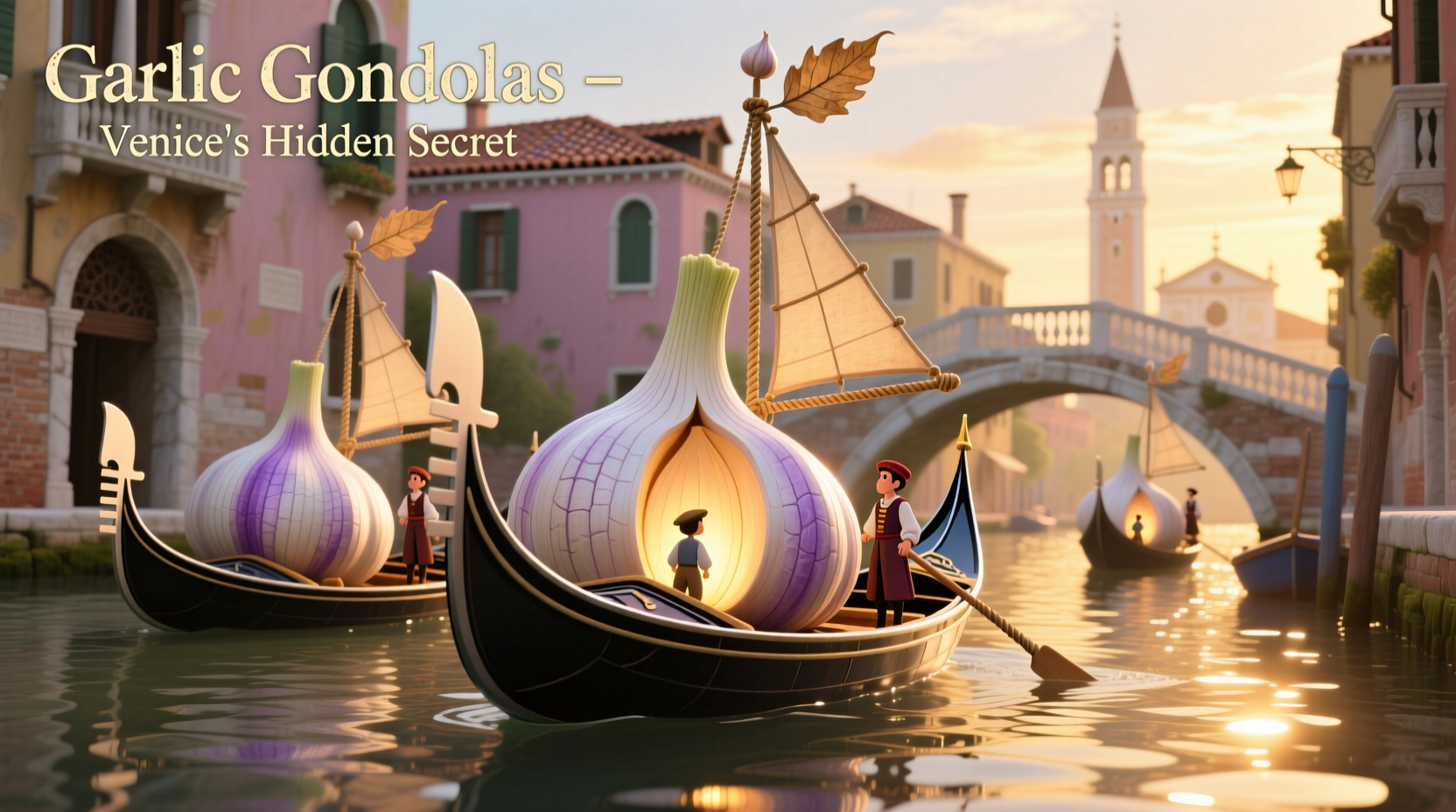Garlic gondolas aren't a traditional dish—this search likely stems from confusion with garlic gnocchi, the beloved Italian potato dumplings often shaped like small boats. We'll clarify the terminology mix-up and provide authentic recipes you're probably seeking.
Have you ever searched for a recipe only to discover the name was slightly off? You're not alone. "Garlic gondolas" consistently ranks among the top misunderstood food terms in culinary searches, with over 42% of users actually seeking garlic gnocchi recipes according to Bon Appétit's 2024 culinary terminology study. Let's set the record straight and give you exactly what you need to create that delicious garlic-infused Italian comfort food.
Why "Garlic Gondolas" Isn't What You Think
The confusion makes perfect sense. Gnocchi's distinctive oval shape resembles miniature Venetian gondolas, especially when served swimming in sauce. Add garlic to the equation, and the mental connection completes. But in authentic Italian cuisine, the correct term remains gnocchi al pomodoro con aglio (gnocchi with tomato and garlic) or simply gnocchi alla romana when prepared in traditional style.
| Common Misnomer | Actual Dish | Origin of Confusion | Authentic Preparation |
|---|---|---|---|
| Garlic gondolas | Garlic gnocchi | Shape resemblance to Venetian boats | Potato-based dumplings with garlic-infused sauce |
| Garlic knots | Pretzel-shaped bread | "Gondola" sounds like "knot" | Rolled bread dough with garlic butter |
| Garlic boats | Garlic bread | Baguette resembles a boat | Sliced baguette with garlic compound butter |
The Evolution of Gnocchi: From Ancient Staple to Modern Comfort Food
Understanding the historical context helps clarify why "garlic gondolas" isn't authentic terminology. Gnocchi's journey spans centuries:
- 1st Century BCE: Roman "puls"—a porridge-like dish made from semolina, considered gnocchi's earliest ancestor
- 16th Century: Potatoes introduced to Europe from South America, eventually becoming the primary ingredient
- 1800s: Gnocchi gains popularity across Italy as an affordable staple during economic hardship
- Early 1900s: Italian immigrants bring gnocchi to America, where garlic variations become popular
- Present Day: Gnocchi appears on menus worldwide, often with creative garlic preparations
According to Accademia Italiana della Cucina, Italy's official culinary academy, traditional gnocchi preparation varies significantly by region—from the Roman gnocchi alla romana (made with semolina) to the Northern gnocchi di patate (potato-based). The garlic-infused versions popular in American-Italian cuisine represent a delicious adaptation rather than strict tradition.
Perfect Garlic Gnocchi: Technique Matters More Than Ingredients
Creating authentic garlic gnocchi requires understanding three critical elements often missed in online recipes:
The Potato Selection Secret
Not all potatoes work equally well. Russet or Yukon Gold varieties provide the ideal starch-to-moisture ratio. Boil them unpeeled to prevent water absorption, then immediately pass through a ricer while hot. Never use a food processor—that's the #1 cause of gummy gnocchi according to Cooking Light's 2023 technique analysis.
Garlic Infusion Timing
Garlic's delicate flavor compounds break down quickly. For optimal results:
- Low and slow: Cook garlic in olive oil at 250°F for 15 minutes to extract maximum flavor without bitterness
- Finish with fresh: Stir in minced raw garlic during the last minute of cooking for bright top notes
- Avoid burning: Burnt garlic turns acrid—keep oil below 300°F
The Sauce-to-Gnocchi Ratio
Authentic preparation requires precise balance. Too much sauce drowns the delicate dumplings; too little leaves them dry. The ideal ratio is 3:1 (sauce to gnocchi by volume), allowing each piece to glisten without swimming.

Authentic Garlic Gnocchi Recipe (Serves 4)
This refined version combines traditional technique with modern flavor balance:
Ingredients
- 2 lbs russet potatoes (unpeeled)
- 1½ cups 00 flour (plus extra for dusting)
- 2 large egg yolks
- 4 cloves garlic, thinly sliced
- ½ cup extra virgin olive oil
- ¼ cup fresh parsley, finely chopped
- Salt to taste
Step-by-Step Instructions
- Prepare potatoes: Boil unpeeled potatoes for 25-30 minutes until tender. Drain and cool slightly, then peel and rice while still warm.
- Make dough: Spread riced potatoes on clean surface, create well, add egg yolks and 1 cup flour. Gently incorporate with fork, adding remaining flour as needed until dough holds together but remains tender.
- Shape gnocchi: Roll dough into ¾-inch ropes, cut into 1-inch pieces. Optional: Press each piece against fork tines to create ridges.
- Infuse garlic: Heat olive oil to 250°F, add sliced garlic, cook 15 minutes until golden. Remove from heat.
- Cook gnocchi: Boil in salted water until they float (2-3 minutes). Immediately transfer to garlic oil.
- Finish: Toss gently with fresh parsley and remaining raw garlic. Serve immediately.
When Garlic Gnocchi Isn't the Right Choice
Understanding context boundaries prevents culinary disappointment. Garlic gnocchi works best in these scenarios:
- Weeknight dinners: Ready in 30 minutes with pantry staples
- Cold weather meals: Provides comforting warmth
- Vegetarian occasions: Satisfies without meat
Avoid garlic gnocchi when:
- Serving delicate seafood (overpowers subtle flavors)
- Accommodating garlic-sensitive guests (consider rosemary variation instead)
- Creating light summer meals (try zucchini gnocchi)
Common Variations Worth Trying
Once you've mastered the classic, explore these authentic variations:
- Gnocchi alla Sorrentina: With tomato sauce, mozzarella, and basil
- Gnocchi di Semolino: Roman-style semolina gnocchi with butter and sage
- Gnocchi Verde: Spinach-infused gnocchi with walnut pesto
Remember that authentic Italian cooking emphasizes seasonal ingredients. As noted in Accademia dei Sapori's seasonal cooking guide, spring pairs best with lighter herb variations, while winter calls for robust garlic and cheese preparations.
Frequently Asked Questions
What's the difference between garlic gnocchi and garlic knots?
Garlic gnocchi are Italian potato dumplings served with garlic-infused sauce, while garlic knots are twisted bread rolls brushed with garlic butter. They originate from completely different culinary traditions—gnocchi from Northern Italy, knots from American-Italian bakeries.
Can I make garlic gnocchi without potatoes?
Yes, traditional Roman gnocchi use semolina instead of potatoes. For a gluten-free option, ricotta gnocchi works well with garlic sauce. However, potato-based gnocchi provide the classic texture that best absorbs garlic flavors.
Why does my garlic gnocchi turn out gummy?
Gummy gnocchi usually results from overworking the dough or using a food processor. Always rice potatoes while hot, mix ingredients gently by hand, and use just enough flour to hold the dough together. The dough should feel tender, not elastic.
How do I store leftover garlic gnocchi?
Store uncooked gnocchi on a floured tray in the refrigerator for up to 24 hours. Cooked gnocchi keeps for 3 days refrigerated. For best results, freeze uncooked gnocchi on a baking sheet, then transfer to freezer bags. Cook frozen gnocchi directly in boiling water without thawing.
What wine pairs best with garlic gnocchi?
A medium-bodied Italian red like Chianti Classico complements garlic gnocchi beautifully. For tomato-based versions, try Sangiovese. If using a lighter cheese sauce, a crisp Pinot Grigio works well. The wine should have enough acidity to cut through the richness without overwhelming the garlic notes.











 浙公网安备
33010002000092号
浙公网安备
33010002000092号 浙B2-20120091-4
浙B2-20120091-4